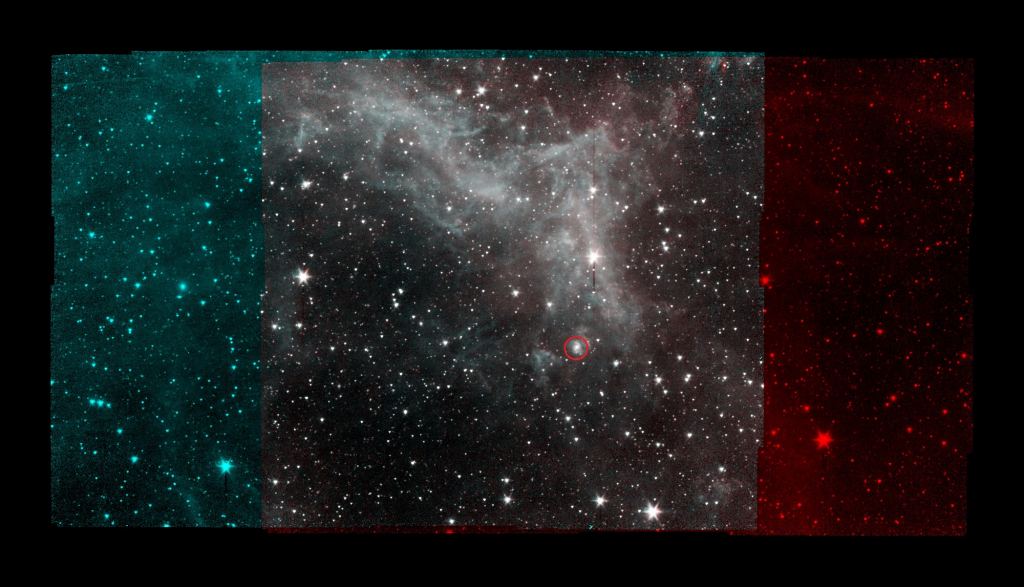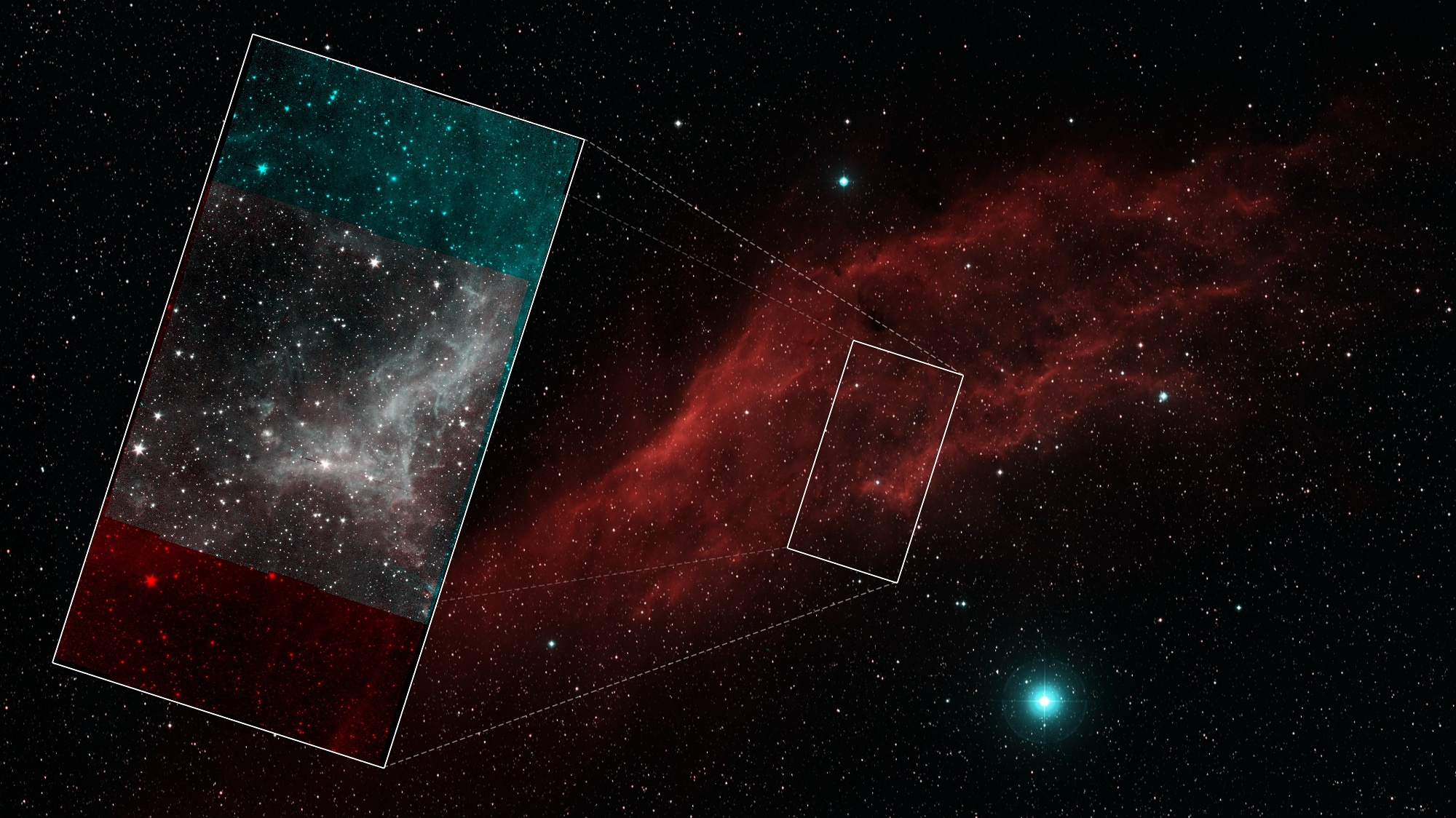On Jan. 30th, 2020, NASA’s Spitzer Space Telescope was retired after sixteen years of faithful service. As one of the four NASA Great Observatories – alongside Hubble, Chandra, and Compton space telescopes – Spitzer was dedicated to studying the Universe in infrared light. In so doing, it provided new insights into our Universe and enabled the study of objects and phenomena that would otherwise be impossible.
For instance, Spitzer was the first telescope to see light from an exoplanet and made important discoveries about comets, stars, and distant galaxies. It is therefore fitting that mission scientists decided to spend the last five days before the telescope was to be decommissioned capturing breathtaking images of the California Nebula, which were stitched into a mosaic and recently released to the public.
Located about 1,000 light-years from Earth, the California Nebula is so-named because of the way its shape – long, narrow, and bend to the right near the bottom – resembles that of the Golden State. As with all nebulas, only so much can be seen in visible light, which is the result of the nebula gas being heated by stars in the interior – in this case, the extremely massive Xi Persei (aka. Menkib).
This is where Spitzer‘s capabilities come into play. Between 2009 and 2020, the space telescope studied the Universe in a non-visible part spectrum, thus giving astronomers the ability to discern objects and matter that would otherwise be invisible to them. Spitzer did this using two detectors that simultaneously imaged adjacent areas of the sky in different wavelengths of infrared light – 3.6 and 4.5 micrometers.
When looking at the California Nebula, Spitzer revealed features that were otherwise invisible. Of particular interest was the fine dust that is mixed with the nebula’s gas, which absorbs visible and ultraviolet light from nearby stars and re-emits it as infrared light. As always, Spitzer took multiple pictures of this region of the sky in a grid-like pattern to ensure that both detectors were able to image it simultaneously.
By combining those images into a mosaic, it was possible to see what a given region looked like in multiple wavelengths. These wavelengths were then color-coded to indicate what part of the IR wavelength they reside in – cyan for 3.6 and red for 4.5 micrometers – and shown in relation to what could be seen in visible light.
NASA selected the California Nebula during Spitzer’s final week of operations from a list of potential targets that would be within the telescope’s field of view. The California Nebula was selected because, a) Spitzer had not yet studied it, and b) the likelihood that it would contain prominent infrared features and provide a significant scientific return.

As Sean Carey, the manager of the Spitzer Science Center at Caltech who helped select the nebula for observation, said in a recent NASA press statement:
“Sometime in the future, some scientist will be able to use that data to do a really interesting analysis. The entire Spitzer data archive is available to the scientific community to use. This is another piece of the sky that we’re putting out there for everyone to study.”
The Spitzer team made additional science observations until the last day before the mission ended (Jan. 29th), but none were as visually stunning as the California Nebula. These included the light caused by zodiacal dust, which is material scattered throughout our Solar System from comets sublimating and collisions between asteroids.
Because comets and asteroids are material leftover from the formation of the Solar System, observations of this dust can provide astronomers with a look back in time. Spitzer’s orbit, which takes the observatory up to 256 million km (158 million mi) from Earth (or 600 times the distance between the Earth and the Moon), also provided it with a unique vantage point to study zodiacal dust.

The mission team also used this time to close the shutter on Spitzer’s camera, which is something that had never been done before. This allowed the team to produce more accurate images of distant objects by subtracting the subtle effects that Spitzer’s instruments might have on their light measurements.
Despite being retired, scientists continue to analyze Spitzer data, which can be accessed by researchers and citizen scientists alike through the Spitzer data archive. This archive is located at the Infrared Science Archive (IRSA), which is housed at the Infrared Processing and Analysis Center (IPAC) at Caltech (where Spitzer science operations were conducted).
Next year, the next-generation James Webb Space Telescope (JWST) will be deployed to space. Using its advanced suite of IR instruments, which will allow for longer wavelength coverage and greater sensitivity, it will build upon the legacy of Spitzer and Hubble by examining the most distant and unseens parts of our Universe.
To learn more about Spitzer and its biggest discoveries, NASA has created a free VR application for HTC Vive and Oculus Rift, which is available at the Spitzer website. The Spitzer YouTube page also has two non-interactive VR experiences that can be viewed as immersive 360 videos. Be sure to check them out!
Further Reading: NASA/JPL

